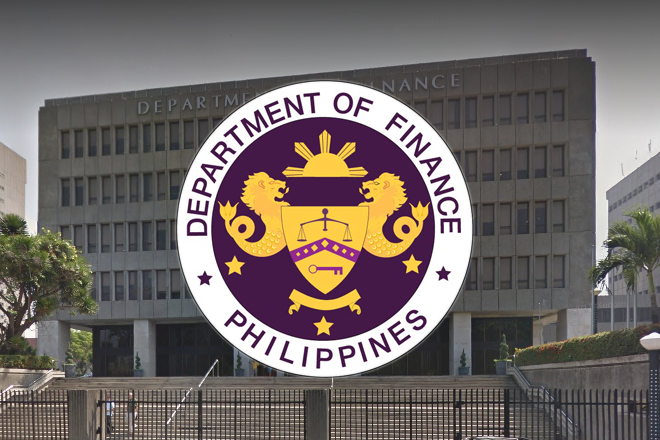DOF submits CTRP Package 2 to Congress
January 16, 2018
The Department of Finance (DOF) has formally submitted to the House of Representatives this week the second package of the Duterte administration’s Comprehensive Tax Reform Program (CTRP) that aims to reduce corporate income tax (CIT) rates and modernize fiscal incentives to investors, the DOF said Tuesday. As committed earlier by Finance Secretary Carlos Dominguez III last year, the DOF submitted this tax reform package through the Office of the Speaker upon the resumption on Jan. 15 of the second regular session of the Congress following its yearend recess. The Constitution provides that all revenue measures should emanate from the House of Representatives. Package 1 of the CTRP, also known as the Tax Reform for Acceleration and Inclusion Act (TRAIN), was signed into law by President Duterte last Dec. 19. It slashed personal income tax rates--the first time that the government did so by law--while raising additional revenues for infrastructure and social services through the repeal of several non-essential exemptions to the value-added tax (VAT); adjustments in the excise tax rates for fuel, coal and automobiles; and a tax on sugar-sweetened beverages among other measures. The CTRP’s Package 2, which the DOF designed to be revenue-neutral, proposes to gradually lower the CIT rate from 30 to 25 percent while modernizing incentives for companies to make these "performance-based, targeted, time-bound, and transparent," Finance Undersecretary Karl Kendrick Chua said. Chua said through this tax reform package, the government would be able to ensure that incentives granted to businesses generate jobs, stimulate the economy in the countryside and promote research and development; contain sunset provisions so that tax perks do not last forever; and are reported so the government can determine the magnitude of their costs and benefits to the economy. He said incentives enjoyed mostly by big businesses such as income tax holidays and other perks with no time limits need to be corrected as it is costing the government over P300 billion annually in foregone revenues. Citing 2015 data, Chua said income tax holidays and special rates account for P86.25 billion of the revenue losses, while custom duty exemptions account for P18.4 billion. Exemptions from paying the VAT on imports led to P159.82 billion in foregone revenues; and local VAT, P36.96 billion, although part of this tax will eventually have to be refunded because these are imposed on exporters, he said. He said these incentives totaling P301.22 billion does not include exemptions from payment of local business taxes and estimates on tax leakages. In terms of income tax incentives, the government, in effect, gave away P61.33 billion to companies in 2011, which went up to P88.17 billion in 2014. Customs duty exemptions have gone down from P82.97 billion in 2011 to P38.04 billion in 2014 owing to the various free trade agreements signed by the Philippines with other countries. “So on average, we gave away up to 2 percent of our GDP in income tax and custom duties exemptions,” Chua said. The enactment of the Tax Incentives Management and Transparency Act (TIMTA) in 2016 has allowed the DOF to track incentives systematically, Chua said. “So in general, we are giving almost 0.8 percent of GDP so far on tax incentives from these income tax holidays and custom duty exemptions. Together with the VAT, it is P301 billion, or 2 percent of GDP. These are only the investment incentives,” Chua said. Chua has pointed out the government collects income taxes from large corporations and other private firms representing only 3.7 percent of Gross Domestic Product (GDP), or a collection rate of a low 12 percent because of 315 laws or provisions that grant businesses tax breaks and other perks. He said compared to other economies in the Association of Southeast Asian Nations (ASEAN), the Philippines imposes the highest CIT rate but is among those at the bottom in terms of collection efficiency, resulting in a high rate but narrow tax base. The Philippines, he said, imposes a CIT rate of 30 percent but with a tax collection efficiency rate of only 12.3 percent. Thailand’s CIT rate is only 20 percent but it collects almost triple--a 30.5 percent efficiency--that represents 6.1 percent of its GDP. Vietnam’s CIT rate is 25 percent but it collects even more with a 29.2 percent tax efficiency rate representing 7.3 percent of GDP. Malaysia’s 24 percent CIT generates a 27.1 percent efficiency rate in terms of collecting taxes, which is 6.5 percent of GDP. Chua said a flawed and outdated system that provides tax incentives to companies under 123 investment laws and 192 non-investment laws is the reason for the country’s low CIT collection efficiency. Under the Philippine tax code, all corporations, unless receiving fiscal incentives, have to pay a regular CIT rate of 30 percent or a minimum CIT rate of 2 percent of gross income beginning the fourth taxable year immediately following the year in which a corporation commenced its business operations, when the minimum income tax is greater than the regular tax. The optional standard deduction for corporations is 40 percent of gross income under the tax code. DMS
Latest Videos
- THE UNTOLD STORY EXPERT INSIGHTS INTO THE UKRAINE
- NEGOTIATING A NEW ORDER US RUSSIA TALKS ON UKRAIN
- Ukraine: A Pawn in the Geopolitical Game? Will Trump Intervene?
- US VP VANCE CRITICIZES EUROPEAN DEMOCRACIES AT MUNICH SECURITY CONFERENCE
- UNCOVERING THE WEB OF DECEIT: CIA INFILTRATION OF THE MEDIA
- SHIFTING SANDS: TULSI GABBARD’S CONFIRMATION AND THE EVOLVING GLOBAL LANDSCAPE
- FAUCI SCANDAL: A THREAT TO GLOBAL HEALTH AND DEMOCRACY






